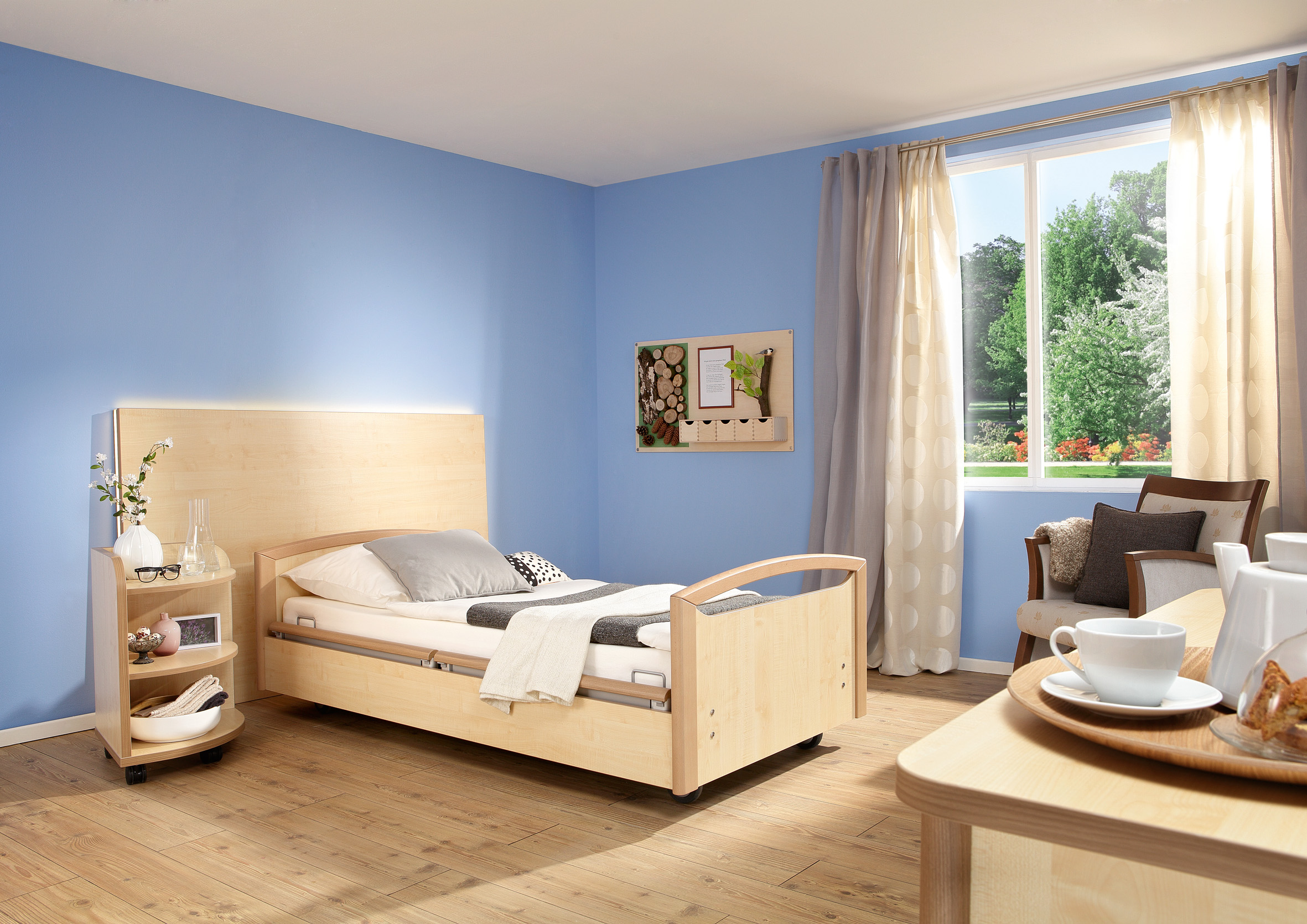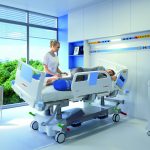In hospitals, nursing and rehabilitation facilities, light fulfills very different functions. It influences the atmosphere, supports the workplace, helps with orientation and ultimately has to be economical. There are exemplary and intelligent lighting solutions for all areas of application, from the patient room to the administration, to the cafeteria or underground car park, which serve both the human and the requirements of energy efficiency.
For Patients and Home Residents: Healthy Light
Especially when a person is ill and their natural defense mechanisms are weakened, their sensitivity to sensory stimuli is particularly high. Cleverly used light can make a decisive contribution so that patients feel well cared for and cared for by the room atmosphere. Light to feel good is needed wherever the patient stays for a long time. These include reception areas, waiting and visitor rooms as well as patient rooms.
In these areas, a harmonious light mood can reduce stress and anxiety and promote therapeutic success. Meanwhile, research has clearly proven that light can accelerate recovery processes. The healing effect of skin diseases such as atopic dermatitis is undisputed. Dynamically variable lighting solutions that create islands of light for security and increase activity, respond to the basic needs of the people and thus help recover. Multiple light sources and dynamic light changes lead to significantly better results than static solutions with only one type of illumination. Light wins through diversity and change.
For doctors, nursing and administrative staff: light to work
In operating rooms, examination rooms, laboratories, administrative areas and kitchens, patients, unlike staff, spend only a short time. Here light has to support the work of the staff in the first place. Glare-free and shadow-free, sufficiently strong and excellent color rendering is necessary to meet the responsibility of the medical, medical-technical and caring staff. They demand the utmost concentration, accuracy and empathy. The demands on the quality of light are correspondingly high. Studies at the Zurich University of Technology have shown that a dynamic change in illuminance, light direction and light color promotes human well-being and attention in the workplace. If you work during the night, light can make a decisive contribution to better prepare your inner clock for the changes.
For the operator: Safe and economical light
In traffic areas and areas with increased hygienic requirements, it is the safety that justifies a decision for high-quality lighting solutions. In corridors, traffic zones and underground garages, the light provides orientation – with adequate lighting and varied rhythms, monotony does not stand a chance. Ever since the public funds have become scarce and the public is increasingly focusing on the success and cost-effectiveness of hospitals, nursing and REHA facilities, the subject of energy saving is becoming increasingly important. The use of efficient lamps and technologies makes a considerable contribution to reduce energy consumption. This can be lowered additionally and to a large extent by light management. Daylight-dependent controls, the use of occupancy sensors and time clocks reduce consumption without affecting the quality of the light. On the contrary, light and artificial light become one unit. Light quality and lighting efficiency are in balance.


